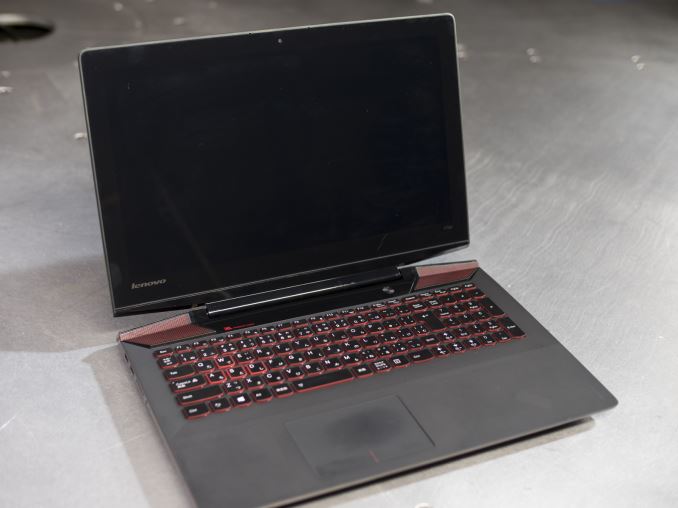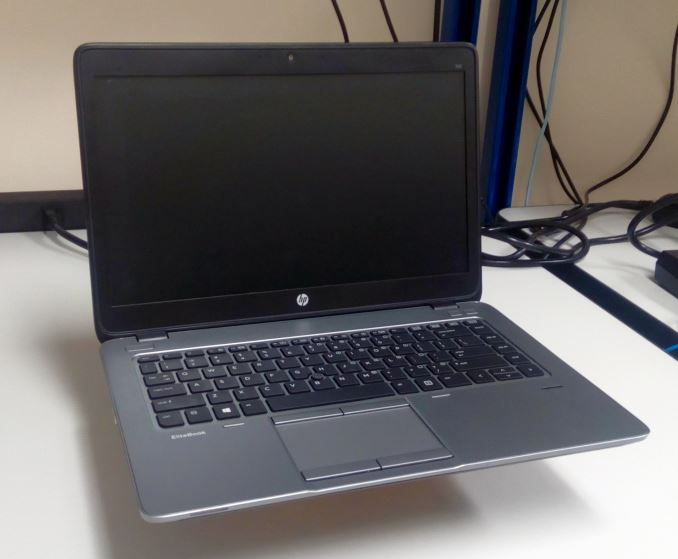Who Controls the User Experience? AMD’s Carrizo Thoroughly Tested
by Ian Cutress on February 4, 2016 8:00 AM EST
In Q2 of 2015, AMD officially launched Carrizo, their new APU aimed at mobile devices such as laptops and portable all-in-ones that normally accommodate 15W-35W processors. Quoted in the media as 'the biggest change to Bulldozer since Bulldozer itself', the marketing arm of AMD released information regarding the Excavator architecture of the new processor, and which contained a long list of fluid and dynamic implementations on improving the Bulldozer based architecture over the previous iteration of Steamroller (Kaveri). Despite this, AMDs target market for the Carrizo platform has not been receptive to AMDs product stack in recent generations due to issues surrounding performance, battery life and designs. AMD believes to have solved the first two of those matters with Carrizo, whereas the third is out of their hands and up to the OEMs to embrace AMDs platform. We wondered if the OEM’s concerns were well placed, and organized some special testing to confirm AMD’s claims about Carrizo.
Who Controls the User Experience: AMD’s Carrizo Tested
Back in early 2015, we performed a long analysis on Intel’s Core M platform, featuring 4.5W processors under the Broadwell microarchitecture. The purpose of that piece was to test several designs using that line of processors, and examining how the design of the chassis and features of the platform directly affected both performance and user experience. For Brett and I at the time, it was an eye opening endeavor, showing just how the slowest processor in a stack in the right notebook chassis can outperform the fastest, most expensive processor in a bad chassis that is wholly un-optimized.
This review is along similar lines, but instead we are testing AMD’s latest Carrizo platform, which is focused on 15W mobile parts in the $400 to $700 market. We approached AMD after the Carrizo Tech Day back in May with a proposal – to speak to engineers and to test the claims made about the platform. Typically sourcing AMD laptops, at least over the past few years, has been a veritable minefield as they are seemingly never promoted by OEM partners as review samples, or as one senior member put it, ‘Some sales people only seem to offer AMD devices if people specifically ask for them’. Our proposal involved sourcing a number of Carrizo laptops when they were launched and tackling them head on, to see how many of the claims made on the Tech Day were testable but also noticeable and true. The issue AMD and OEMs have is that everyone in the AMD-to-OEM-to-retailer chain is invested in selling the platform, so there needs to be a source of third-party testing for people who don’t trust that chain.
Over the course of a few months, our proposal changed and merged with ideas to speak with AMD’s VPs and engineers, with a number of meetings and discussions. It emerged the best way to do this was to fly to AMD’s HQ in Austin, Texas for a week and get hands on time in the labs. We agreed, as speaking to engineers and learning what is going on behind the scenes at AMD is always a good thing, but on the condition that we were free to setup, test and report without any predisposition to the results. There is an added benefit of having engineers only a floor or two away if a problem was to arise. There have been similar events in the past where media have been invited on-site for canned testing, but we made sure this wasn’t going to be the case before we arrived. For example, Qualcomm has invited select media to in-hand, temporary Snapdragon testing on a couple of occasions, with media free to test and report whatever results.
The Testing
We had four Carrizo devices on hand to test for a week, along with a single Kaveri system. These devices were sourced by AMD, and I put in requests for a variety of price points, hardware configurations and styles, along with some specific testing equipment to which we don’t have access. While it wasn’t possible to get everything on hand due to timing issues, the arrangement at least captured a number of areas we planned on testing.
The testing aimed to cover the devices as units, the underlying hardware, as well as the Tech Day claims. Some of this piece will read like a regular review, some of it similar to our Core M testing regarding performance, power and temperature, but a large part is reserved for discussing both the results and the market. When building a platform like Carrizo, a lot of binary decisions are made that can be good or bad for the processor manufacturer, the OEM or the user. We discuss these in detail as a result of our findings.












175 Comments
View All Comments
MonkeyPaw - Friday, February 5, 2016 - link
The cat cores exist to compete with Atom-level SOCs. Intel takes the Atom design from phones and tablets all the way up to Celeron and Pentium laptops. It makes some business sense due to low cost chips, but if the OEM puts them in a design and asks too much of the SOC, then there you have a bad experience. Such SOCs should not be found in anything bigger than a $300 11" notebook. For 13" and up, the bigger cores should be employed.michael2k - Friday, February 5, 2016 - link
The cat cores can't compete with Atom level SoC because they don't operate at low enough power levels (ie, 2W to 6W). The cat cores may have been designed to compete with Atom performance and Atom priced parts, but they were poorly suited for mobile designs at launch.Intel999 - Sunday, February 7, 2016 - link
AMD hasn't updated the cat cores in over three years! It is a dead channel to them. They had a bit of a problem competing in the tablet market against a competitor that was willing to dump over $4 billion pushing inferior bay trail chips. Take a plane to China and you can still find a lot of those Bay Trail chips sitting in warehouses as once users had the misfortune of using tablets being run by them the reviews destroyed any chance that those tablets ever had at being sales successes.AMD was forced to stop funding R&D on cat cores as they were in no position to be selling them at negative $5.
In the time that AMD has stopped development on the cat cores Intel has improved their low end offerings, but still not enough to compete with ARM offerings that have improved as well. And now tablets are dropping at similar rates to laptops so it is actually a good thing for AMD that they suspended research on the cat cores. Sorta dodged a bullet.
At least they still get decent volume out of them through Sony and Microsoft gaming platforms.
testbug00 - Friday, February 5, 2016 - link
If the cat cores didn't exist AMD likely would have died as we know it a few years ago.
BillyONeal - Friday, February 5, 2016 - link
The "cat cores" are why AMD is not yet bankrupt; it let them get design wins in the PS4 and XBox One which kept the company afloat.mrdude - Friday, February 5, 2016 - link
YoY Q4 earnings showed a 42% decline in revenue for computing and graphics with less than 2bn in revenue for full-year 2015 and $502m operating loss. You couldn't be more correct. The console wins aren't just keeping the company afloat, they practically define it entirely.Lolimaster - Friday, February 5, 2016 - link
In that case simply remove the OEM's altogether and sell it at AMD's store or selected physical/online stores.TheinsanegamerN - Thursday, February 11, 2016 - link
10/10 would pay for an "AMD" branded laptop that does APUs correctly.Hrobertgar - Friday, February 5, 2016 - link
Since you are talking about use experience, AMD is not the only company with a bad user experience. I purchased an Alienware 15" R2 laptop on cyber Monday and it is horrible, and support is horrible. I compare my user experience to a Commodore 64 using a Cassette drive - its that bad (I suspect you are old enough to appreciate cassette drives). It arrived in a non-bootable configuration. It cannot stream Netflix to my 2005 Sony over an HDMI cable unless I use Chrome - took Netflix help to solve that (I took a cell-phone pic of a single Edge browser straddling the two monitors - the native monitor half streaming video and the Sony half dark after passing over the hdmi cable. It only occurs with Netflix). On 50% of bootups it gives me a memory change error despite even the battery being screwed in. On 10% of bootups it fails to recognize the HDD. Once it refused to shutdown and required holding the power button for 10 secs. Lately it claims the power brick is incompatible on about 10% of bootups. Yes, I downloaded all latest drives, bios, chipset, etc. Customer Service has hanged up on me once, deleted my review once, and repeatedly asked for my service tag after I already gave it to them. Some of the Netflix issue is probably Micorsoft's issue - certainly MS App was an epic fail, but much of even that must be Dell's issue. I realize it is probably difficult to spot many of these things given the timeframe of the testing you do, and the Netflix issue in particular is bizarre. I am starting to think a Lenovo might not be so bad.tynopik - Friday, February 5, 2016 - link
"put of their hands"